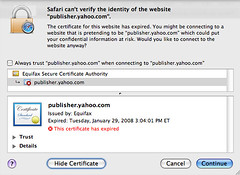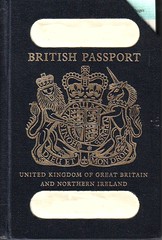Because the TSA’s security regimen seems to be mainly thing-based—most of its 44,500 airport officers are assigned to truffle through carry-on bags for things like guns, bombs, three-ounce tubes of anthrax, Crest toothpaste, nail clippers, Snapple, and so on—I focused my efforts on bringing bad things through security in many different airports, primarily my home airport, Washington’s Reagan National, the one situated approximately 17 feet from the Pentagon, but also in Los Angeles, New York, Miami, Chicago, and at the Wilkes-Barre/Scranton International Airport (which is where I came closest to arousing at least a modest level of suspicion, receiving a symbolic pat-down—all frisks that avoid the sensitive regions are by definition symbolic—and one question about the presence of a Leatherman Multi-Tool in my pocket; said Leatherman was confiscated and is now, I hope, living with the loving family of a TSA employee). And because I have a fair amount of experience reporting on terrorists, and because terrorist groups produce large quantities of branded knickknacks, I’ve amassed an inspiring collection of al-Qaeda T-shirts, Islamic Jihad flags, Hezbollah videotapes, and inflatable Yasir Arafat dolls (really). All these things I’ve carried with me through airports across the country. I’ve also carried, at various times: pocketknives, matches from hotels in Beirut and Peshawar, dust masks, lengths of rope, cigarette lighters, nail clippers, eight-ounce tubes of toothpaste (in my front pocket), bottles of Fiji Water (which is foreign), and, of course, box cutters. I was selected for secondary screening four times—out of dozens of passages through security checkpoints—during this extended experiment. At one screening, I was relieved of a pair of nail clippers; during another, a can of shaving cream.
During one secondary inspection, at O’Hare International Airport in Chicago, I was wearing under my shirt a spectacular, only-in-America device called a “Beerbelly,” a neoprene sling that holds a polyurethane bladder and drinking tube. The Beerbelly, designed originally to sneak alcohol—up to 80 ounces—into football games, can quite obviously be used to sneak up to 80 ounces of liquid through airport security. (The company that manufactures the Beerbelly also makes something called a “Winerack,” a bra that holds up to 25 ounces of booze and is recommended, according to the company’s Web site, for PTA meetings.) My Beerbelly, which fit comfortably over my beer belly, contained two cans’ worth of Bud Light at the time of the inspection. It went undetected. The eight-ounce bottle of water in my carry-on bag, however, was seized by the federal government.
…
Schneier and I walked to the security checkpoint. “Counterterrorism in the airport is a show designed to make people feel better,” he said. “Only two things have made flying safer: the reinforcement of cockpit doors, and the fact that passengers know now to resist hijackers.” This assumes, of course, that al-Qaeda will target airplanes for hijacking, or target aviation at all. “We defend against what the terrorists did last week,” Schneier said. He believes that the country would be just as safe as it is today if airport security were rolled back to pre-9/11 levels. “Spend the rest of your money on intelligence, investigations, and emergency response.”
…
We took our shoes off and placed our laptops in bins. Schneier took from his bag a 12-ounce container labeled “saline solution.”
“It’s allowed,” he said. Medical supplies, such as saline solution for contact-lens cleaning, don’t fall under the TSA’s three-ounce rule.
“What’s allowed?” I asked. “Saline solution, or bottles labeled saline solution?”
“Bottles labeled saline solution. They won’t check what’s in it, trust me.”
They did not check. As we gathered our belongings, Schneier held up the bottle and said to the nearest security officer, “This is okay, right?” “Yep,” the officer said. “Just have to put it in the tray.”
“Maybe if you lit it on fire, he’d pay attention,” I said, risking arrest for making a joke at airport security. (Later, Schneier would carry two bottles labeled saline solution—24 ounces in total—through security. An officer asked him why he needed two bottles. “Two eyes,” he said. He was allowed to keep the bottles.)
We were in the clear. But what did we prove?
“We proved that the ID triangle is hopeless,” Schneier said.
The ID triangle: before a passenger boards a commercial flight, he interacts with his airline or the government three times—when he purchases his ticket; when he passes through airport security; and finally at the gate, when he presents his boarding pass to an airline agent. It is at the first point of contact, when the ticket is purchased, that a passenger’s name is checked against the government’s no-fly list. It is not checked again, and for this reason, Schneier argued, the process is merely another form of security theater.
“The goal is to make sure that this ID triangle represents one person,” he explained. “Here’s how you get around it. Let’s assume you’re a terrorist and you believe your name is on the watch list.” It’s easy for a terrorist to check whether the government has cottoned on to his existence, Schneier said; he simply has to submit his name online to the new, privately run CLEAR program, which is meant to fast-pass approved travelers through security. If the terrorist is rejected, then he knows he’s on the watch list.
To slip through the only check against the no-fly list, the terrorist uses a stolen credit card to buy a ticket under a fake name. “Then you print a fake boarding pass with your real name on it and go to the airport. You give your real ID, and the fake boarding pass with your real name on it, to security. They’re checking the documents against each other. They’re not checking your name against the no-fly list—that was done on the airline’s computers. Once you’re through security, you rip up the fake boarding pass, and use the real boarding pass that has the name from the stolen credit card. Then you board the plane, because they’re not checking your name against your ID at boarding.”
What if you don’t know how to steal a credit card?
“Then you’re a stupid terrorist and the government will catch you,” he said.
What if you don’t know how to download a PDF of an actual boarding pass and alter it on a home computer?
“Then you’re a stupid terrorist and the government will catch you.”
I couldn’t believe that what Schneier was saying was true—in the national debate over the no-fly list, it is seldom, if ever, mentioned that the no-fly list doesn’t work. “It’s true,” he said. “The gap blows the whole system out of the water.”


